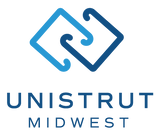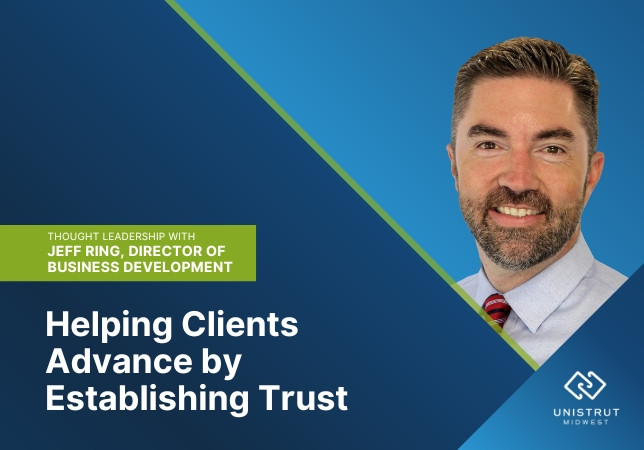Helping Clients Advance by Establishing Trust
Posted by Jeff Ring on September 25, 2024
As the saying goes, the only constant in life is change. While that may be true, people are often resistant to change, and that becomes magnified when talking about large organizations. Our industry and many others have been dominated by traditional solutions, and it can be a tall order to get a client to consider a new method, product, or process. But change is often necessary for growth.
Truthfully, our team has seen a shift in the industry in the past few years. Prior to the pandemic, a conversation about prefabrication or modular solutions was often met with some reluctance and disinterest. Post-pandemic, there has been a fundamental shift in not only our industry but the workforce at large. Consequently, our industry and others lost a wealth of experience through early retirements, layoffs, and a desire for more flexible work arrangements. Despite the labor issues that ensued, companies have had to adapt to these challenges to be able to thrive in this new environment. Many companies are figuring out how to meet goals with fewer people and fewer hours. For our clients, the best way to achieve that is through prefabrication.
The reality of the workforce has shown many organizations that they need to think about construction in new ways in order to keep up with the competition and stay successful. What was formerly a conversation about why clients should adopt new strategies has instead become one about finding the right partner to help implement those changes.
Establishing Trust to Implement Change
At Unistrut Midwest, our goal isn’t to sell a product, it’s to become a long-term partner for our clients. Building trust with a client creates a strong partnership and positions us as a resource to guide them through major shifts in their methodologies.
Through researching the company and our years of experience, we can quickly identify how prefabrication can enhance a potential clients’ workflow. We find that clients appreciate that we’ve researched their company and that we come to the table with ideas on how prefabrication can benefit them.
The most successful way we've found to establish trust with a potential client is to show them real examples of our projects. Seeing our solutions for skids and MTRs and learning how we handle projects for hospitals or data centers builds credibility between our team and the client. Providing real-life examples and being open and honest with our proven solutions creates a foundation for trust.
Establishing Trust No Matter the Industry
Our approach to building client relationships is applicable beyond the construction industry. Learning about the client, providing evidence of proven solutions, and walking through their questions and concerns can help create a long-term partnership no matter the market.
This whole process has to begin with consideration for the clients' point of view. We approach these situations by assuring the client that we know this is a new idea, something they haven't seen before, and that it can be intimidating. To familiarize uneasy clients, we'll take one of their existing structural steel projects and quote it out as a modular build. By comparing the estimates for material and labor costs as well as manhours, the client is able to clearly see if the benefits are worth the change for them.
Once they take the leap, it's all about delivering for the client. Quickly turning around quotes and estimates, helping to solve last minute challenges accurately and in a timely manner, and providing advice where needed, allows us to continue to build a reputation of being a reliable partner.
The evolution of our industry and others is dictating how companies have to move forward. Organizations know they need to make changes, but are concerned about working with the right partner to do so. We want to be that partner, helping clients through a transition period and guiding them towards success.
What new concerns are you seeing in your conversations with clients? How are you helping them approach those challenges?

